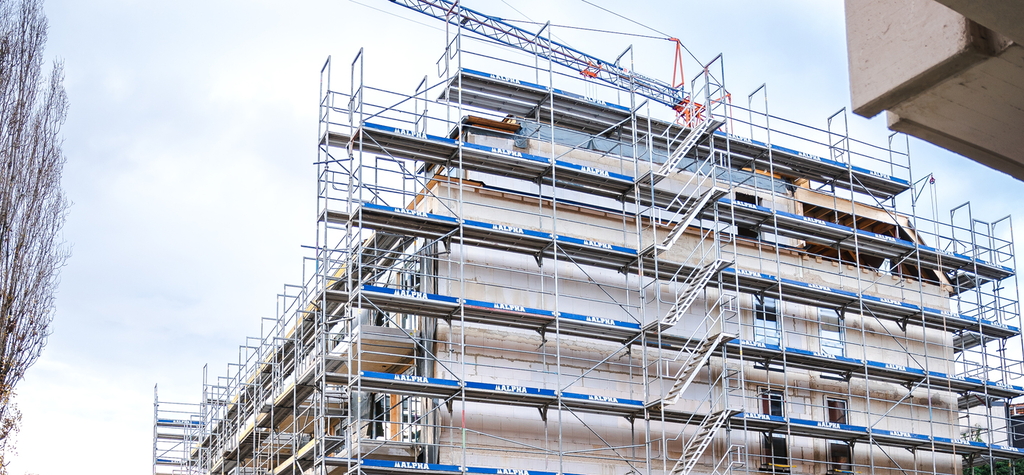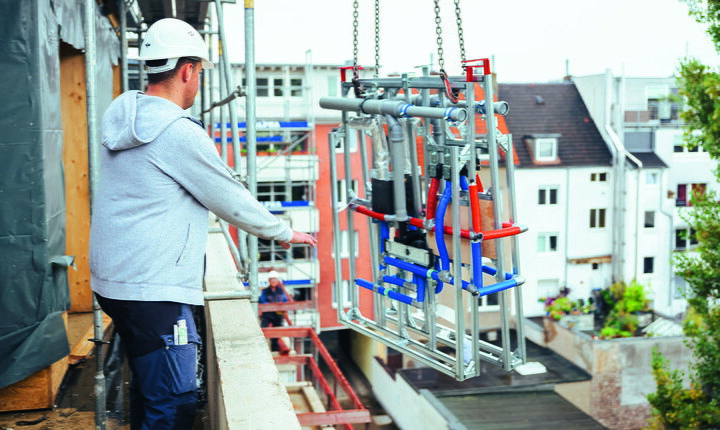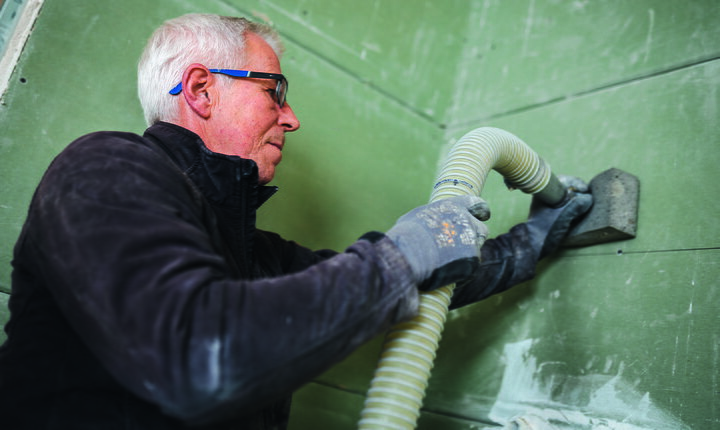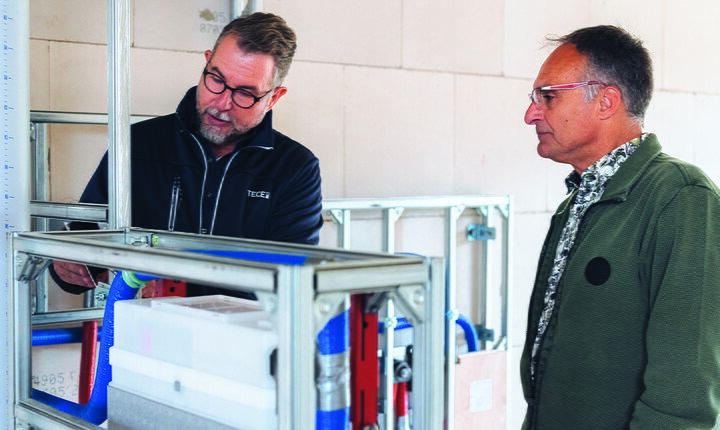
Additional space for students – with prefabricated partition walls
Innovative and efficient construction of new student flats on Dürener Straße in Cologne
The extension of a single-storey existing building on Dürener Straße in Cologne demonstrates how inner-city living space can be created efficiently. A modular construction method with industrially prefabricated installation walls was used in the construction of 20 new student apartments: ‘The special feature of this modular construction method from TECEsystem is that the installation wall with integrated shaft acts directly as a partition wall,’ explains MEP specialist planner Ralf Becker (PlanTeG).

After visiting a trade fair, building contractor representative Kurt-Peter Becher opted for this innovative solution for the sanitary installation. "This application enables the apartments to be marketed more quickly. Compared to conventional construction with a pre-wall installation in front of a partition wall, this solution leads to more efficient use of space. We have gained one square metre of living space per residential unit, which is a significant gain," explains Becher. This solution has proven itself in practice. In around 50 per cent of TECEsystem projects, installation walls are also used as partition walls. In conventional construction, the construction of a room partition wall would be more costly, more complex and would take up more space.
The use of industrially prefabricated walls reduces the liability risk when it comes to the usability of individual products, ensures a clear specification of services and reduces all questions regarding planning, execution and also warranty to a single responsible contact person.
‘The MEP should be conceptually integrated from service phase 2 onwards,’ explains specialist planner Becker. This allows efficient installation concepts and fire protection solutions to be coordinated in good time and interfaces between MEP and dry-wall construction to be clearly defined. The decision on blown-in insulation is also made at an early stage. When installed in the room partition wall with integrated shaft, this meets the requirements for vertical and horizontal fire and sound protection.
With blown-in insulation technology, cavity-free and non-combustible insulation ensures that fire and smoke cannot spread. For planners, the tender specifications are significantly reduced to just a few items, possibly a dozen modules, which are described in full.
Frank Hoffmann from the certified specialist company Dachfit is responsible for installing the blown-in insulation. ‘This consists of mineral insulation granulate with a melting point of over 1,000 °C and a bulk density of approx. 90 kg/m3,’ he explains.


The blown-in insulation has been tested as a complete system with the TECEsystem installation walls and system planking. The industrially prefabricated installation walls in the four-storey extension form a continuous shaft, which is completely blown out at the end. ‘By inserting the insulation granulate, I achieve a cavity-free filling of the shaft volume and thus also smoke tightness. At the transition to the next floor, the circular gap around the pipes and cables is completely enclosed by mineral wool, thus ensuring fire and smoke sealing. This gives us an F90 construction,’ says Hoffmann. Ultimately, there is only one company responsible for the entire fire protection in the installation shaft. Savings of up to 30 per cent compared to traditional fire protection and insulation measures are possible.
